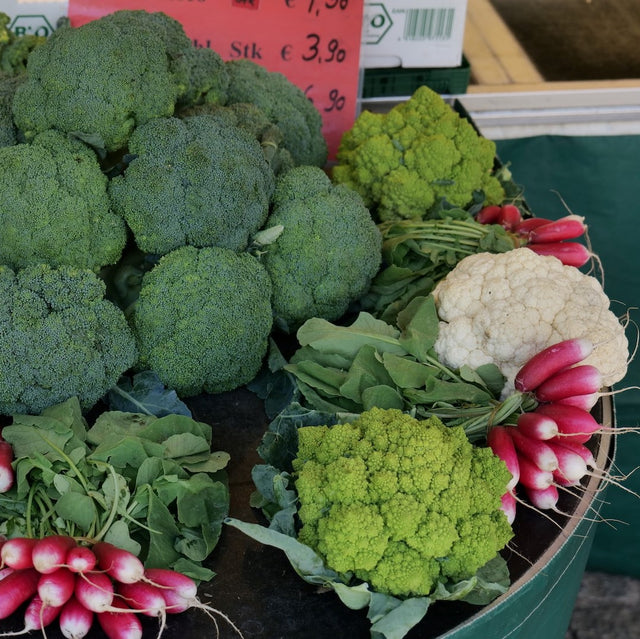

One could argue that broccolis and cauliflowers are similar, especially with regards to how they look (visible color differences aside)! But are they really that closely interchangeable?
Similarities
- They belong to the same plant family: Brassicaceae, which includes cabbage, kale, and Brussel sprouts.
- Both are abundant in protein, calcium, fiber, and antioxidants.
- Both fall under the umbrella of "Clean Fifteen".
- They make a wide range of dishes. Both can be consumed raw, steamed, sautéed, grilled, or roasted.
- Both contain raffinose, a carbohydrate that our bodies lack the enzyme needed to break down, which can result in bloating and gas (whoops!).
Differences
- Although from the same family, broccoli is a member of the Italica cultivar group while cauliflower is part of the Botrytis cultivar group.
- Broccoli is a biennial plant while cauliflower is an annual plant.
- Broccoli has a much more pronounced earthy taste while cauliflower is nutty, subtly sweet and considerably milder.
- Broccoli contains more calories, folate, and manganese (which improves bone density) as well as vitamins A, C, and K.
- Cauliflower is more versatile and a good substitute for specific grains to make low-carb pizza crusts, rice meals, tortillas, and pasta.
- Cauliflower contains beta-carotene (which is beneficial for healthy hair) and omega-3 fatty acids (which is necessary for muscle growth).
- Only the cauliflower's head is edible while for broccoli, the edible part is the flower bud.
While these two vegetable have a few differences especially when it comes to nutritional contents, they're both equally delicious and needed for a well-rounded diet!
Sources
